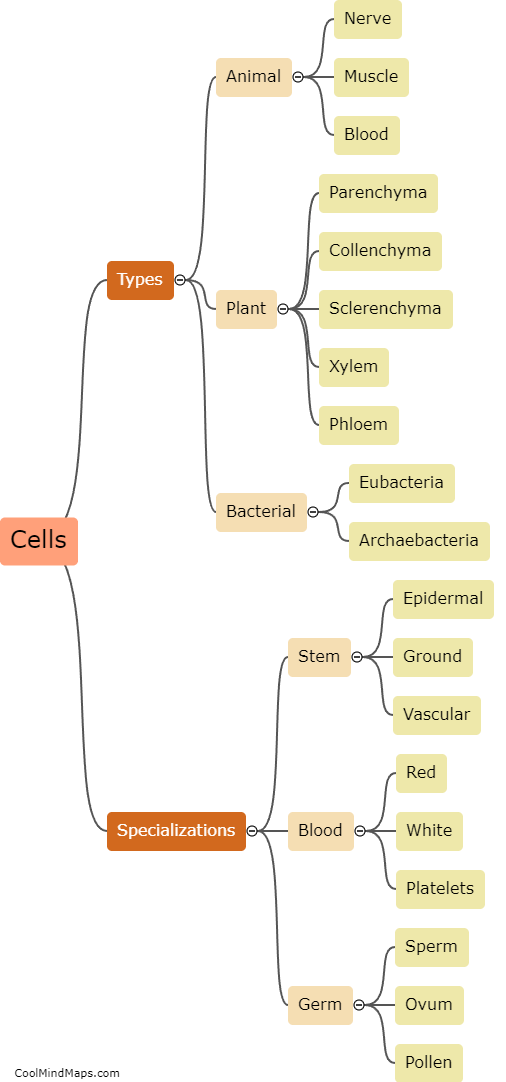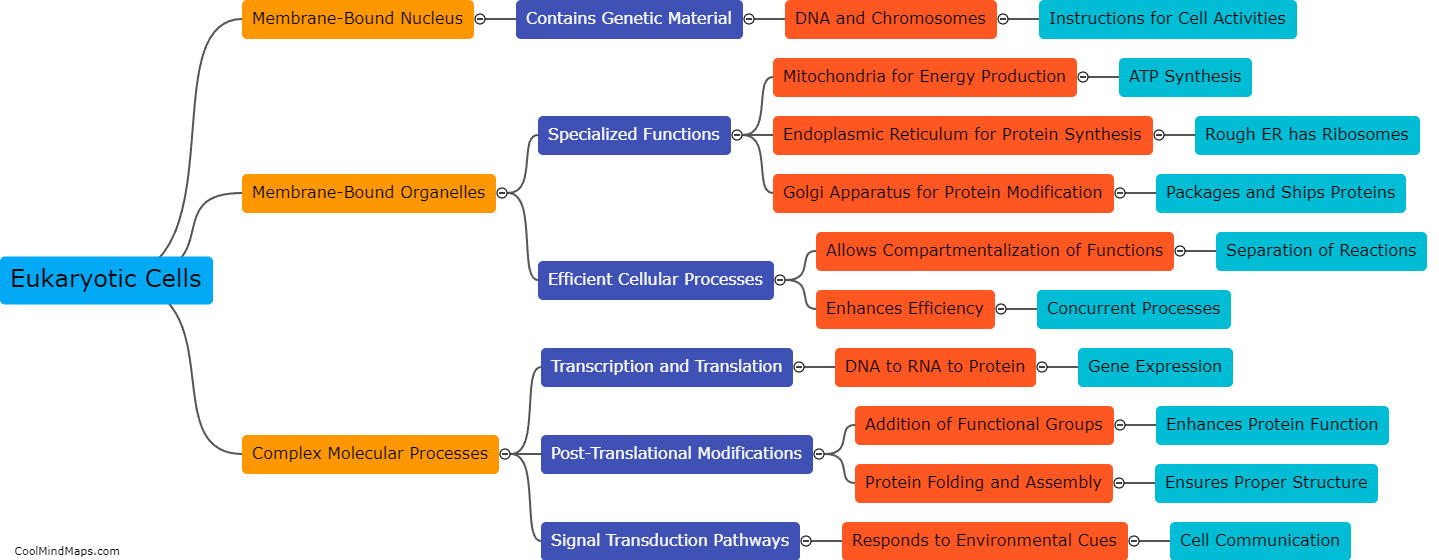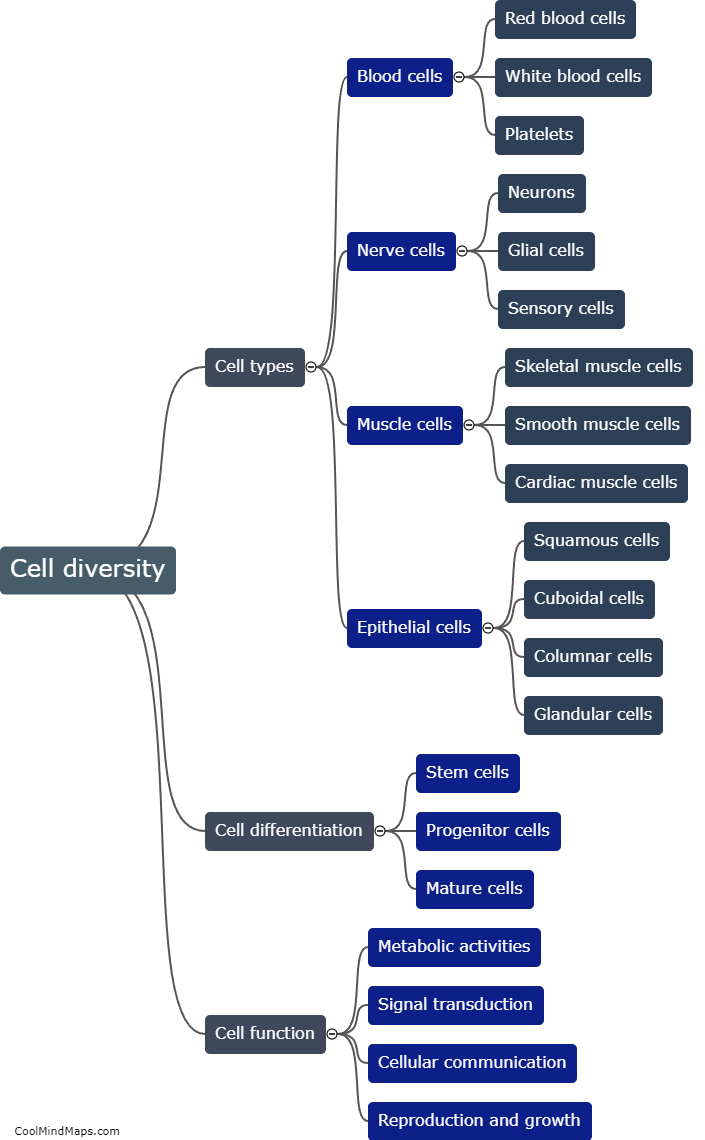How do cells contribute to the diversity of living organisms?
Cells contribute to the diversity of living organisms in numerous ways. Firstly, cells possess genetic material in the form of DNA, which can undergo mutations and genetic recombination. These processes introduce variations and create different genetic combinations, leading to genetic diversity. Additionally, cells can differentiate, giving rise to various specialized cell types throughout an organism. The specialization of cells allows for the formation of distinct tissues, organs, and systems, which contributes to the overall diversity of organism structure and function. Furthermore, cells exhibit varying physiological and biochemical capabilities, allowing them to perform diverse roles within an organism. From generating energy and metabolizing nutrients to performing specific functions within tissues, cells contribute to the overall diversity of living organisms by carrying out a vast array of tasks.

This mind map was published on 26 October 2023 and has been viewed 122 times.











